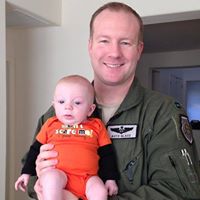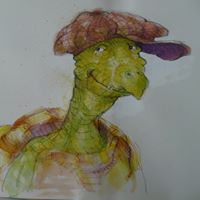Andrew G Glass
age ~86
from Arch Cape, OR
- Also known as:
-
- Andrew Dr Glass
- Andrew George Glass
- Andrew Living Glass
- Nancy Glass
- Phone and address:
-
79924 Beach Rd, Arch Cape, OR 97102
5034360140
Andrew Glass Phones & Addresses
- 79924 Beach Rd, Arch Cape, OR 97102 • 5034360140 • 5034369258
- 5221 SW Humphrey Blvd, Portland, OR 97221 • 5032976572
- 524 Humphrey Blvd, Portland, OR 97221 • 5032928718
- 5241 Humphrey Blvd, Portland, OR 97221 • 5032928718 • 5034360140
- 6222 17Th Ave, Portland, OR 97202
- Seattle, WA
Work
-
Company:Kaiser foundation health plan of the northwest
-
Address:3800 N Interstate Ave, Portland, OR 97227
-
Phones:5033352400
-
Position:Md health care researcher
-
Industries:Noncommercial Research Organizations
Specialities
Commercial Disputes • Class Action Litigation Defense • Consumer Financial Services • Telecom, Media and Technology
Lawyers & Attorneys

Andrew Glass - Lawyer
view sourceOffice:
K&L Gates LLP
Specialties:
Commercial Disputes
Class Action Litigation Defense
Consumer Financial Services
Telecom, Media and Technology
Class Action Litigation Defense
Consumer Financial Services
Telecom, Media and Technology
ISLN:
912991144
Admitted:
1997
University:
Dartmouth College, A.B.; Dartmouth College, A.B.; Harvard University Department of Architecture, 1992; Harvard University Department of Architecture, 1992
Law School:
Harvard Law School, J.D., 1997
Isbn (Books And Publications)








Name / Title
Company / Classification
Phones & Addresses
Md Health Care Researcher
Kaiser Foundation Health Plan of The Northwest
Noncommercial Research Organizations
Noncommercial Research Organizations
3800 N Interstate Ave, Portland, OR 97227
Principal
Glass Medical Consulting
Business Consulting Services
Business Consulting Services
5241 SW Humphrey Blvd, Portland, OR 97221
Osteopathy
Providence Willamette Falls Medical Center
Home Health Care Services
Home Health Care Services
16180 SE Sunnyside Rd, Happy Valley, OR 97015
Md Health Care Researcher
Kaiser Foundation Health Plan of The Northwest
3800 N Interstate Ave, Portland, OR 97227
3600 N Interstate Ave, Portland, OR 97227
5033352400, 5033352424, 5032859321, 5032802930
3600 N Interstate Ave, Portland, OR 97227
5033352400, 5033352424, 5032859321, 5032802930
Manager
Library Media Center
Information Technology and Services · Library
Information Technology and Services · Library
9600 College Way N, Seattle, WA 98103
Principal
Braineacts LLC
Nonclassifiable Establishments
Nonclassifiable Establishments
1007 109 St Ct E, Tacoma, WA 98445
Us Patents
-
Wireless Device Support For Electronic Devices
view source -
US Patent:7436300, Oct 14, 2008
-
Filed:Nov 12, 2004
-
Appl. No.:10/987980
-
Inventors:Andrew C Glass - Woodinville WA, US
Bernard J Thompson - Bellevue WA, US
Bradley L Fosdick - Kirkland WA, US
Chih Jen Wen - Redmond WA, US
Christopher M Dreher - Seattle WA, US
Doron J Holan - Seattle WA, US
Firdosh K Bhesania - Kirkland WA, US
Gary M Rensberger - Redmond WA, US
Peter E. H. Hauser - Kirkland WA, US
Randall E Aull - Kenmore WA, US -
Assignee:Microsoft Corporation - Redmond WA
-
International Classification:G08B 13/14
H04B 5/00
H04M 3/00 -
US Classification:3405681, 455 411, 455418, 4554121, 370310, 370313
-
Abstract:Disclosed are a unique system and method that facilitate establishing and maintaining a secure connection between at least one wireless input component and a host (e. g. , PC). The system and method involve the wireless input component broadcasting a message that can be “heard” by any potential host located within a given distance from the wireless input component. The message can indicate that the input component is available for use or pairing with a PC. PCs in the area can respond to the message by notifying the user that a wireless input component is available and by generating a random PIN. The PIN can be displayed to the user on the respective PC. The user can be prompted to enter the PIN using the wireless device. When a match between the user's response and the corresponding PC is determined, the two can be securely linked. In addition the invention provides support of wireless input devices at boot or start up.
-
Capacitive Bonding Of Devices
view source -
US Patent:7684754, Mar 23, 2010
-
Filed:Jun 3, 2003
-
Appl. No.:10/453066
-
Inventors:Andrew C. Glass - Woodinville WA, US
Christopher M. Dreher - Bothell WA, US
Ellick H. Sung - Seattle WA, US
Randall E. Aull - Kenmore WA, US
Doron J. Holan - Seattle WA, US
Craig S. Ranta - Redmond WA, US -
Assignee:Microsoft Corporation - Redmond WA
-
International Classification:H04B 7/00
-
US Classification:455 412, 455 40, 455 411, 340 552, 340 553, 340 58, 382115, 382123, 382124
-
Abstract:The present invention relates to systems and methods that facilitate wireless device communications and configuration. A detection component identifies N devices that are coupled together via a biological medium, N being an integer, wherein the medium includes direct or indirect touching to a device or devices. After biological contact, a configuration component initiates a configuration between a subset of the devices. Although configurations and/or other communications can be conducted through a medium such as the human body, the present invention can employ an initial touch to identify respective devices whereby other electronic configuration sequences commence without further device contact. Other aspects include chain touching between users and/or devices to facilitate contact between the devices. Location detection components can also be provided to identify when users are present near a device, the detected presence to commence further automated procedures, and/or the location detection components can enable devices to identify other devices in a crowded wireless environment.
-
Multi-Dimensional Graphical Display Of Discovered Wireless Devices
view source -
US Patent:7716585, May 11, 2010
-
Filed:Aug 28, 2003
-
Appl. No.:10/650622
-
Inventors:Andrew C. Glass - Woodinville WA, US
-
Assignee:Microsoft Corporation - Redmond WA
-
International Classification:G06F 15/177
G06F 15/16 -
US Classification:715734, 715736, 715738, 715739
-
Abstract:A device discovery and presentation system. The architecture facilitates automatically sensing devices, ports, or other wirelessly identifiable entities by detecting such entities, and displaying a 2-D or 3-D representation of the relative location of such entities to a user via a display. The architecture may be controlled to detect such entities in a confined envelope of space for a specified distance.
-
Capacitive Bonding Of Devices
view source -
US Patent:8036595, Oct 11, 2011
-
Filed:Jun 9, 2006
-
Appl. No.:11/423235
-
Inventors:Andrew C. Glass - Woodinville WA, US
Christopher M. Dreher - Bothell WA, US
Ellick H. Sung - Seattle WA, US
Randall E. Aull - Kenmore WA, US
Doron J. Holan - Seattle WA, US
Craig S. Ranta - Redmond WA, US -
Assignee:Microsoft Corporation - Redmond WA
-
International Classification:H04B 5/00
-
US Classification:455 411, 455 40, 455 95, 455100, 340 564, 34082572, 340565, 713186
-
Abstract:The present invention relates to systems and methods that facilitate wireless device communications and configuration. A detection component identifies N devices that are coupled together via a biological medium, N being an integer, wherein the medium includes direct or indirect touching to a device or devices. After biological contact, a configuration component initiates a configuration between a subset of the devices. Although configurations and/or other communications can be conducted through a medium such as the human body, the present invention can employ an initial touch to identify respective devices whereby other electronic configuration sequences commence without further device contact. Other aspects include chain touching between users and/or devices to facilitate contact between the devices. Location detection components can also be provided to identify when users are present near a device, the detected presence to commence further automated procedures, and/or the location detection components can enable devices to identify other devices in a crowded wireless environment.
-
Capacitive Bonding Of Devices
view source -
US Patent:8380130, Feb 19, 2013
-
Filed:Sep 9, 2011
-
Appl. No.:13/229608
-
Inventors:Andrew C. Glass - Woodinville WA, US
Christopher M. Dreher - Bothell WA, US
Ellick H. Sung - Seattle WA, US
Randall E. Aull - Kenmore WA, US
Doron J. Holan - Seattle WA, US
Craig S. Ranta - Redmond WA, US -
Assignee:Microsoft Corporation - Redmond WA
-
International Classification:H04B 7/00
-
US Classification:455 412, 455 411, 455 95, 455100, 340 564, 340 72, 340825, 713186, 382115, 382123, 382124
-
Abstract:Various embodiments relate to systems and methods that facilitate wireless device communications and configuration. A detection component identifies N devices that are coupled together via a biological medium, N being an integer, wherein the medium includes direct or indirect touching to a device or devices. After biological contact, a configuration component initiates a configuration between a subset of the devices.
-
Language Lists For Resource Selection
view source -
US Patent:20130325435, Dec 5, 2013
-
Filed:May 31, 2012
-
Appl. No.:13/485917
-
Inventors:Rylan Michael Hawkins - Seattle WA, US
Eric Scott Albright - Sammamish WA, US
Nicholas A. Beal - Bothell WA, US
Peter Geoffrey Constable - Redmond WA, US
Wade H. Curtiss - Kirkland WA, US
Erik Fortune - Redmond WA, US
Andrew Stuart Glass - Seattle WA, US
Samuel Aaron Beard - Snohomish WA, US -
Assignee:Microsoft Corporation - Redmond WA
-
International Classification:G06F 17/20
-
US Classification:704 8
-
Abstract:A device may be configured to enable a user to select a language, and may fulfill resource requests from applications by selecting, from among resources respectively associated with a language, a resource associated with the selected language of the user. However, this resource selection process may be inadequate if the user selects multiple languages; if a resource associated with the selected language of the user is unavailable, but resources associated with related languages are available; or if the user and/or the application specifies an ordering for the selection among the languages. Presented herein are techniques for performing the resource selection by, for respective languages selected by the user, calculating a weight representing a suitability of the language for the resource request; generating a selection order of the selected languages according to the weights; and selecting a resource based on the position of the associated language in the selection order.
-
Application Language Libraries For Managing Computing Environment Languages
view source -
US Patent:20130326347, Dec 5, 2013
-
Filed:May 31, 2012
-
Appl. No.:13/485829
-
Inventors:Eric Scott Albright - Sammamish WA, US
Nicholas A. Beal - Bothell WA, US
Peter Geoffrey Constable - Redmond WA, US
Wade H. Curtiss - Kirkland WA, US
Erik Fortune - Redmond WA, US
Andrew Stuart Glass - Seattle WA, US
Samuel Aaron Beard - Snohomish WA, US -
Assignee:Microsoft Corporation - Redmond WA
-
International Classification:G06F 17/00
-
US Classification:715265
-
Abstract:Language selection and application within a computing environment are often distributed over and differently applied by the operating system and various applications, leading to additional administration, inconsistencies in the user experience based on different language feature implementations among different applications; and increased cost and redundancy in developing language features for different applications. Presented herein are techniques for configuring a device with an application language library that centralizes the selection of languages by the user, and that provides a wide variety of language features (e.g., text translation, user interface adaptation, and data formats) to the applications and operating system. The application language library may also enable a multilingual user to select multiple languages; may apply a selection logic to choose a suitable language for each invocation of the application language library; and may enable the user to configure the selection among the languages for various types and instances of invocations.
-
Login Interface Selection For Computing Environment User Login
view source -
US Patent:20130326605, Dec 5, 2013
-
Filed:May 31, 2012
-
Appl. No.:13/485683
-
Inventors:Adam James Betz - Kirkland WA, US
Wade H. Curtiss - Kirkland WA, US
Andrew Stuart Glass - Seattle WA, US -
Assignee:Microsoft Corporation - Redmond WA
-
International Classification:H04L 9/32
G06F 15/16
G06F 21/00 -
US Classification:726 7
-
Abstract:A device may provide a login process to authenticate users prior to admittance to a computing environment. The device may also enable users to adjust various the computing environment, e.g., the language selected for communicating with the user and the user interfaces to be presented to the user, and may store such adjustments in a secured user account. However, if the user account is inaccessible to the device during the login process, the device is unable to adapt the login process to apply the user's adjustments. Instead, the device may be configured to store users' adjustments (including language selection) outside of the user accounts, and to, upon identifying the user during the login process, present login interfaces specified in the user account. Additionally, users may select different login interfaces during login, and the device may retrieve these login interfaces for selection during future login processes for the same user.
License Records
Andrew George Glass Md
License #:
22153 - Expired
Category:
Medicine
Issued Date:
May 22, 2002
Effective Date:
Nov 17, 2006
Expiration Date:
Oct 1, 2006
Type:
Physician
Andrew George Glass Md
License #:
MD-07564-A - Expired
Category:
Medicine
Issued Date:
Aug 13, 2001
Effective Date:
May 22, 2002
Expiration Date:
Aug 17, 2001
Type:
Physician Locum Tenens
Andrew George Glass Md
License #:
MD-07564-B - Expired
Category:
Medicine
Issued Date:
Aug 6, 2001
Effective Date:
May 22, 2002
Expiration Date:
Aug 12, 2001
Type:
Physician Locum Tenens
Resumes

Development Associate
view sourceLocation:
Dallas, TX
Industry:
Real Estate
Work:
Realty Capital Management
Development Associate
Realty Capital Corporation
Junior Developer
J.g. Petrucci Co. Jun 2016 - Sep 2016
Summer Intern
Capacity Commercial Group Llc May 2015 - Aug 2015
Summer Intern
Development Associate
Realty Capital Corporation
Junior Developer
J.g. Petrucci Co. Jun 2016 - Sep 2016
Summer Intern
Capacity Commercial Group Llc May 2015 - Aug 2015
Summer Intern
Education:
Princeton University 2013 - 2017
Skills:
Microsoft Word
Powerpoint
Public Speaking
Microsoft Office
Leadership
Microsoft Excel
Social Media
Research
Data Analysis
Customer Service
Sales
Event Planning
Time Management
Marketing
Teamwork
Powerpoint
Public Speaking
Microsoft Office
Leadership
Microsoft Excel
Social Media
Research
Data Analysis
Customer Service
Sales
Event Planning
Time Management
Marketing
Teamwork
Languages:
English
Spanish
Spanish

Andrew Glass
view source
Andrew Glass
view source
Andrew Glass
view source
Andrew Glass
view sourceLocation:
United States
Medicine Doctors

Dr. Andrew D Glass, Happy Valley OR - DO (Doctor of Osteopathic Medicine)
view sourceSpecialties:
Osteopathic Manipulative Therapy
Address:
Providence Medical Grp Hpy Vly
16180 Se Sunnyside Rd Suite 102, Happy Valley, OR 97015
5035824900 (Phone)
16180 Se Sunnyside Rd Suite 102, Happy Valley, OR 97015
5035824900 (Phone)
Certifications:
Osteopathic Manipulative Medicine
Awards:
Healthgrades Honor Roll
Languages:
English
Hospitals:
Providence Medical Grp Hpy Vly
16180 Se Sunnyside Rd Suite 102, Happy Valley, OR 97015
Providence Willamette Falls Medical Center
1500 Division Street, Oregon City, OR 97045
16180 Se Sunnyside Rd Suite 102, Happy Valley, OR 97015
Providence Willamette Falls Medical Center
1500 Division Street, Oregon City, OR 97045
Education:
Medical School
Kansas City College of Osteopathic Medicine
Graduated: 1997
Kansas City College of Osteopathic Medicine
Graduated: 1997

Dr. Andrew G Glass, Portland OR - MD (Doctor of Medicine)
view sourceSpecialties:
Pediatrics
Address:
3600 N Interstate Ave, Portland, OR 97227
5032493312 (Phone), 5033352424 (Fax)
CENTER FOR HEALTH RESEARCH
3800 N Interstate Ave, Portland, OR 97227
5033352400 (Phone), 5036523494 (Fax)
5032493312 (Phone), 5033352424 (Fax)
CENTER FOR HEALTH RESEARCH
3800 N Interstate Ave, Portland, OR 97227
5033352400 (Phone), 5036523494 (Fax)
Certifications:
Pediatrics, 1970
Awards:
Healthgrades Honor Roll
Languages:
English
Education:
Medical School
Perelman School of Medicine University of Pennsylvania
Graduated: 1965
Medical School
Mass Genl Hosp
Graduated: 1965
Medical School
Childrens Hosp Med Ctr
Graduated: 1965
Perelman School of Medicine University of Pennsylvania
Graduated: 1965
Medical School
Mass Genl Hosp
Graduated: 1965
Medical School
Childrens Hosp Med Ctr
Graduated: 1965

Andrew S. Glass
view sourceSpecialties:
Surgery , Neurological
Work:
Coastal Physicians & Surgeons
110 Hbr Ln STE A, Somers Point, NJ 08244
6096539110 (phone), 6099273934 (fax)
110 Hbr Ln STE A, Somers Point, NJ 08244
6096539110 (phone), 6099273934 (fax)
Education:
Medical School
Mount Sinai School of Medicine
Graduated: 1986
Mount Sinai School of Medicine
Graduated: 1986
Procedures:
Craniotomy
Lumbar Puncture
Spinal Cord Surgery
Spinal Fusion
Spinal Surgery
Lumbar Puncture
Spinal Cord Surgery
Spinal Fusion
Spinal Surgery
Conditions:
Intervertebral Disc Degeneration
Intracranial Injury
Intracranial Injury
Languages:
English
Spanish
Spanish
Description:
Dr. Glass graduated from the Mount Sinai School of Medicine in 1986. He works in Somers Point, NJ and specializes in Surgery , Neurological. Dr. Glass is affiliated with Shore Medical Center and Southern Ocean Medical Center.

Andrew R. Glass
view sourceSpecialties:
Podiatric Medicine
Work:
Downtown Podiatry
111 John St RM 1450, New York, NY 10038
2127915700 (phone), 2127915704 (fax)
Dr Andrew Rigby Glass DPM
50 E 42 St RM 513, New York, NY 10017
2128672500 (phone), 2128673845 (fax)
111 John St RM 1450, New York, NY 10038
2127915700 (phone), 2127915704 (fax)
Dr Andrew Rigby Glass DPM
50 E 42 St RM 513, New York, NY 10017
2128672500 (phone), 2128673845 (fax)
Conditions:
Hallux Valgus
Plantar Fascitis
Tinea Pedis
Plantar Fascitis
Tinea Pedis
Languages:
Chinese
English
Spanish
English
Spanish
Description:
Dr. Glass works in New York, NY and 1 other location and specializes in Podiatric Medicine. Dr. Glass is affiliated with New York Presbyterian Lower Manhattan Hospital.

Andrew D Glass, Sherwood OR
view sourceSpecialties:
Family Physician
Address:
16770 Sw Edy Rd, Sherwood, OR 97140
9775 Se Sunnyside Rd, Clackamas, OR 97015
16180 Se Sunnyside Rd, Happy Valley, OR 97015
9775 Se Sunnyside Rd, Clackamas, OR 97015
16180 Se Sunnyside Rd, Happy Valley, OR 97015
Plaxo

Andrew J Glass
view sourceWashington, DCContributing Editor at PolitiCo

Andrew Douglas Glass
view sourceClassmates

Andrew Glass
view sourceSchools:
Corkran Junior High School Glen Burnie MD 1982-1983

Andrew Glass
view sourceSchools:
Windsor High School North Vancouver Saudi Arabia 1984-1988
Community:
Mark Tripp, Valerie Gibson, Leslie Myers, Michael Thorne, Robert Rainer

Andrew Glass
view sourceSchools:
John Wallace Middle School Newington CT 2000-2004
Community:
Katherine Whitney, Meghan Wentland, Nadine Elman

Andrew Glass
view sourceSchools:
Horizon Science Academy Columbus OH 2005-2009

Andrew Glass
view sourceSchools:
Sarah Anderson Public School 9 New York NY 1943-1947
Community:
Debbie Wolfe

Andrew Glass | Coopersvil...
view source
Andrew Glass, Meadowdale ...
view source
Andrew Glass | Central Ca...
view source
Andrew Thomas Glass
view source
Andrew Glass
view source
Andrew Glass
view source
Andrew Glass
view source
Andrew Glass
view source
Andrew Glass
view source
Andrew Glass
view source
Andrew Glass
view sourceGoogleplus

Andrew Glass
Work:
Politico - Contributing Editor (2006)
Cox Enterprises - Washington Bureau (1974-2001)
Cox Enterprises - Washington Bureau (1974-2001)
Education:
Yale University - History
Tagline:
Andrew Glass

Andrew Glass
Work:
Locker Pro LLC - Crew Chief (2006)
Education:
University of Alabama Birmingham - History and Photography
Tagline:
I'm a photographer, nuff said.

Andrew Glass
Education:
University of Northern Iowa
About:
I invented Google+, Facebook, MySpace, the iPod, Windows 95, the personal computer and banana taffy. You're welcome.
Tagline:
I invented Google+
Bragging Rights:
I'm on Google+

Andrew Glass
Tagline:
Im Andrew Glass, a Graphite Pencil Artist who specializes in portraits and realism!

Andrew Glass

Andrew Glass

Andrew Glass

Andrew Glass
Youtube
Myspace
Flickr
Get Report for Andrew G Glass from Arch Cape, OR, age ~86





















